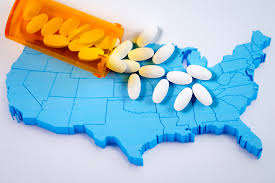The Opioid Crisis: Enhanced
In the midst of a pandemic, some problems can slip through the cracks. One of these problems costs the country over $70 billion a year.

A crisis once prioritized by the country is being silently worsened by the pandemic.
A pandemic feeds off of stress. Stress about wanting to work, stress about getting infected, and most commonly, stress about when this will be over. All of this chaos surrounding a worldwide crisis blinds people from a quiet storm brewing.
Stress.
Addiction.
Relapse
In 2018, 128 people died daily in the United States due to overdosing on opioids. This costs the country 78.5 billion dollars a year. A problem starting from a simple post-surgery prescription evolves into a beast waiting at one’s door every single day. People enjoy ridding themselves of pain and stress, but a pandemic is bound to intensify these emotions.
Similar to the COVID-19 situation, the opioid crisis disproportionately impacts less fortunate communities the most. In health crises, there are often additional burdens placed upon the shoulders of people with lower socioeconomic statuses. These people are placed in a vulnerable position, unable to fend for themselves and get the support they need. This serves as a potential motive to turn to opioids, whether new to them or a recovering addict.
As unemployment rates skyrocket, so does the risk for opioid addiction. Anyone is at risk, from the tensed frontline workers, forced to work long hours without protection to the laid-off employee with a lack of access to proper health insurance and worrying about how to pay next month’s rent. Those who continue to work through this pandemic are often scared to take leave, as they fear that their job could fall out under them at any moment. Those who are unemployed worry not about what might happen in the present but about what will happen when this is all over. These are the pent-up emotions that can turn people towards the comfort of drugs, and right now, the world is full of these feelings..
Not only does the pandemic pose as an encouragement to turn to drugs but it also establishes a problem for recovering addicts. Although opioid treatment programs are considered essential facilities, many patients hesitate to leave their homes out of fear of infection. They assume that not leaving their home for any reason is the safest option. In reality, continuing to attend these treatment programs (while following social distancing protocols) is the safest option for recovering addicts for both physical and emotional health.
The use of opioids can also make a person more exposed to the coronavirus. Firstly, those who inject substances have weakened immune systems and tend to make poor judgment calls. At a glance, this may not seem like an issue, but this is not the entire situation. One must consider the social determinants of health as well. According to the CDC, the social determinants of health are, “conditions in the places where people live, learn, work, and play [which] affect a wide range of health risks and outcomes.” Simply put, people with similar conditions will normally have the same health risks and outcomes. In terms of addiction, this means that addicts are most likely homeless, poor, and importantly, vulnerable to coronavirus. It is as if both of these crises are dependent on each other; the opioid crisis relies on the mental health problems that stem from self-isolation and the coronavirus relies on the weakened immune systems from opioid use.
Another main obstacle coming from the relationship between the pandemic and the Opioid Crisis is the unease to dial 911. This applies not just to addiction but across the health problem spectrum as well. Hospitals across the country are reporting less and less common medical emergencies such as heart attacks and strokes. Self-isolation does not have the power to decrease the number of heart attacks and strokes, so the unfortunate answer is that more people are avoiding hospital visits even if they are in a critical state. The worry of going to the hospital during this time is understandable, but this can be incredibly dangerous. The impact of avoiding hospitals is now being seen with skyrocketing overdose deaths nationwide In Pennsylvania alone, there was a 58.3% jump in overdose deaths from February to March. According to the coroner of one county in Pennsylvania, “In one week in April, we saw nine opioid overdoses” This is a national problem, yet it is not being prioritized.
The Opioid Crisis was large enough before COVID-19, but now with the spark of a health crisis, the entire situation is highly flammable. A great number of people are struggling with mental health issues because of isolation, and it is important to check in with friends and family who may be having trouble. Especially with recovering or susceptible addicts, treatment facilities must ensure that these people are getting the support they need, for current lockdown conditions present dangers such as reusing or sharing needles. It may seem there’s nothing one can do isolated in their home surrounded by a world riddled with chaos, but sometimes, one call can save a life.

Maya Sivakumar is a sophomore at NAI. It is her second year on the NAEye staff. She is very excited to be a co-editor in chief and contribute more ideas...

